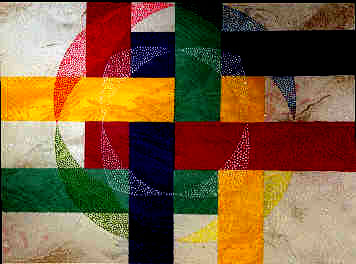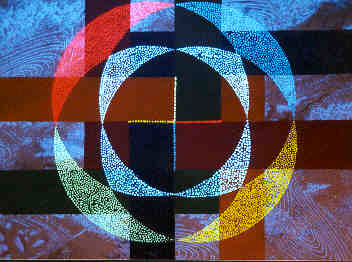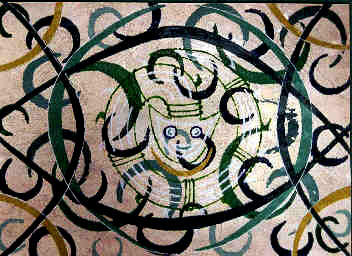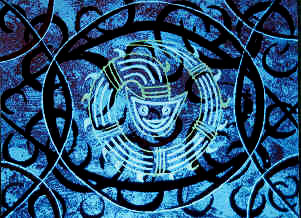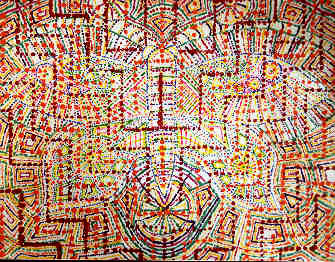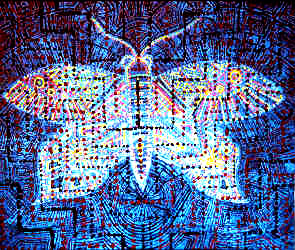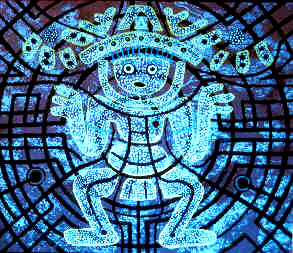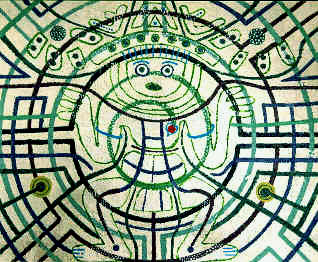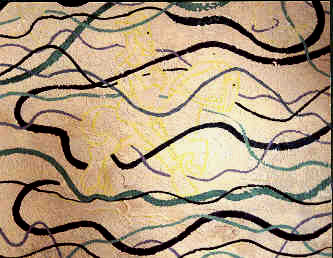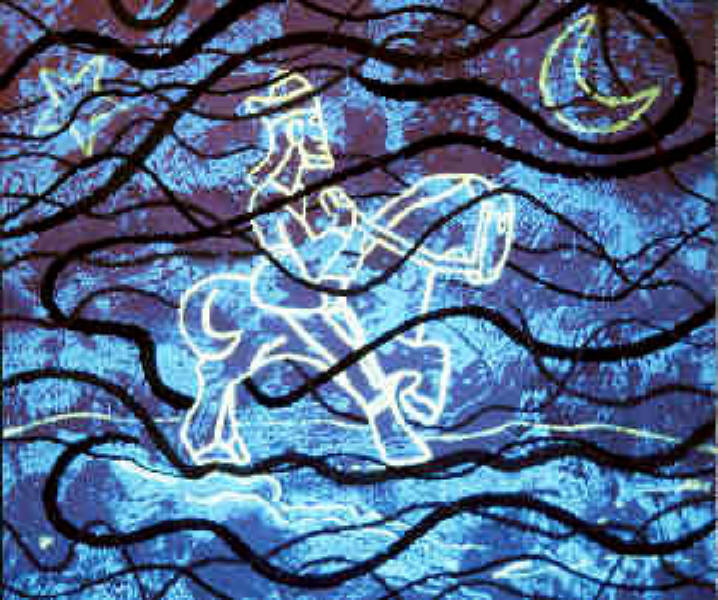In twilight all colours grey ‑ or so they say. Black is not a colour, it is the absorption of Light. White is the reflection of Light. Therefore colour is not a characteristic of paint; the impression of colour is a product from paint pigment together with Light, absorbed and reflected according to its specter. As a result, any picture can be made " alive " by shining Light with various specters on it. One of the strongest effects is the combination from fluorescent paint with ultraviolet Light ( blacklight ). When it shines on the fluorescent image, the Light is reflected using a higher frequency. The resulting intensive glow creates a magical atmosphere. |
This effect is a " live " effect. One cannot photograph fluorescence. The intensity of the Light is visible on a photo, but the ability to reflect the Light on a higher frequency is essential for the element Fluor.The same effect can be obtained by using x‑rays and fluorescent pigments. Also phosphorescent pigments glow under a blacklight, but they have the additional characteristic of reflecting Light after the Light source has been turned off ‑ " The Glow in the Dark Effect ". Light Affectable Art plays with all kinds of Light sources and corresponding pigments. Coloured Light, Blacklight, projections and daylight are used to illuminate images and installations. The observer is drawn into a magical atmosphere through the interplay of picture and Light. Aboriginal painting techniques can be discerned in Tanja's figurative abstract forms, as well Celtic and African motifs influence her work. Light giving lines and points involve the observer more closely and intensively into, the picture. Since 1991 Tanja's decorations and installations are evidence of a new direction: Light Affectable Art.
|
